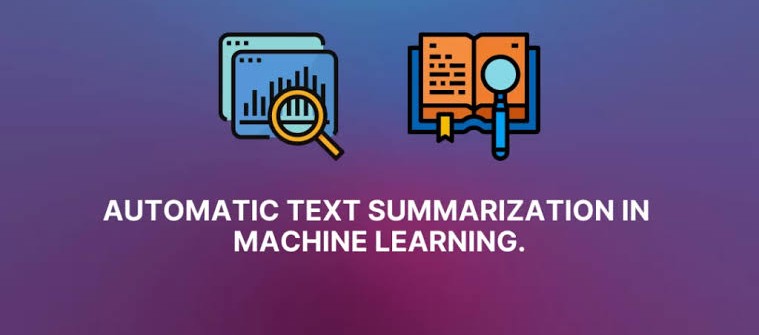Process of summarising text in a reasonable way
Text summarization is essential tool in modern information age. It enables the condensation of vast amounts of information into concise coherent summaries. With exponential growth of data, automating this process has become crucial. Managing and comprehending content efficiently has never been more important. This comprehensive guide explores importance of text summarization. It examines its methodologies applications. Additionally, it looks at challenges associated with automating process.
Importance of Text Summarization
In era where information is abundant and readily accessible. Ability to quickly grasp essence of lengthy documents is invaluable. Text summarization helps in several ways
1. Time Efficiency: Summaries allow individuals to quickly understand the key points of a document without reading it in its entirety. This is particularly useful for professionals who need to stay updated with large volumes of information.
2. Enhanced Understanding: By highlighting the main ideas and critical information, summaries can aid in better comprehension and retention of content.
3. Data Management: Automated summarization helps manage and organize large datasets, making it easier to navigate and retrieve relevant information.
4. Accessibility: Summarized content can make information more accessible to people with cognitive disabilities, language barriers, or limited time.
Methodologies of Text Summarization
Text summarization techniques can be broadly categorized into extractive and abstractive methods.
Extractive Summarization
Extractive summarization involves selecting significant sentences or phrases directly from the original text to create a summary. This method relies on statistical and linguistic features to identify the most relevant parts of the text.
1. Frequency-Based Methods: These methods select sentences based on the frequency of important words or phrases. Higher frequency terms are deemed more important, and sentences containing these terms are included in the summary.
2. TF-IDF (Term Frequency-Inverse Document Frequency): TF-IDF scores highlight words that are important in a specific document but not in others. Sentences containing high TF-IDF scores are chosen for the summary.
3. Graph-Based Methods: Algorithms like TextRank and LexRank use graph-based approaches to rank sentences by their importance. Sentences are nodes, and edges represent the similarity between them. The most central sentences in the graph are included in the summary.
4. Machine Learning: Supervised learning techniques train models on labeled data (summaries) to identify important sentences. Features like sentence length, position, and keyword presence are used to predict sentence importance.
Abstractive Summarization
Abstractive summarization involves generating new sentences that convey the main ideas of the original text, rather than selecting sentences verbatim. This method is more complex as it requires understanding and rephrasing the content.
1. Seq2Seq Models (Sequence-to-Sequence): These models, often using Recurrent Neural Networks (RNNs) or Long Short-Term Memory (LSTM) networks, take the original text as input and generate a summary as output. They are trained on large datasets of documents and their corresponding summaries.
2. Attention Mechanisms: Attention mechanisms help models focus on relevant parts of the input text while generating summaries. This improves the quality and coherence of the generated summaries.
3. Transformer Models: Models like BERT (Bidirectional Encoder Representations from Transformers) and GPT (Generative Pre-trained Transformer) have revolutionized text summarization. They are pre-trained on vast amounts of data and fine-tuned for summarization tasks, producing high-quality summaries.
Applications of Text Summarization
Text summarization has diverse applications across various domains:
1. News Aggregation: Summarization helps create concise news digests, enabling readers to stay informed without reading multiple full-length articles.
2. Academic Research: Researchers can quickly review summaries of scholarly articles, helping them identify relevant studies and trends in their field.
3. Legal Documents: Lawyers and legal professionals use summarization to condense lengthy contracts, case laws, and legal briefs, making it easier to extract pertinent information.
4. Customer Support: Automated summarization of customer inquiries and support tickets can help streamline responses and improve service efficiency.
5. Content Curation: Content creators and marketers use summarization tools to generate brief overviews of blog posts, reports, and social media content, enhancing audience engagement.
Challenges in Automating Text Summarization
Despite its benefits, automating text summarization presents several challenges:
1. Context and Coherence: Maintaining the context and coherence of the original text is difficult, especially in abstractive summarization. Models need to generate summaries that are logically consistent and grammatically correct.
2. Semantic Understanding: Effective summarization requires a deep understanding of the text's meaning and intent. Current models may struggle with nuanced language and complex concepts.
3. Bias and Fairness: Summarization models can inherit biases present in the training data, leading to skewed or inaccurate summaries. Ensuring fairness and impartiality is a critical concern.
4. Evaluation Metrics: Measuring the quality of summaries is challenging. Traditional metrics like ROUGE (Recall-Oriented Understudy for Gisting Evaluation) focus on word overlap, which may not accurately reflect the summary's informativeness and readability.
5. Domain Adaptation: Models trained on general datasets may not perform well on domain-specific texts. Adapting models to different contexts, such as medical or legal documents, requires additional training and fine-tuning.
